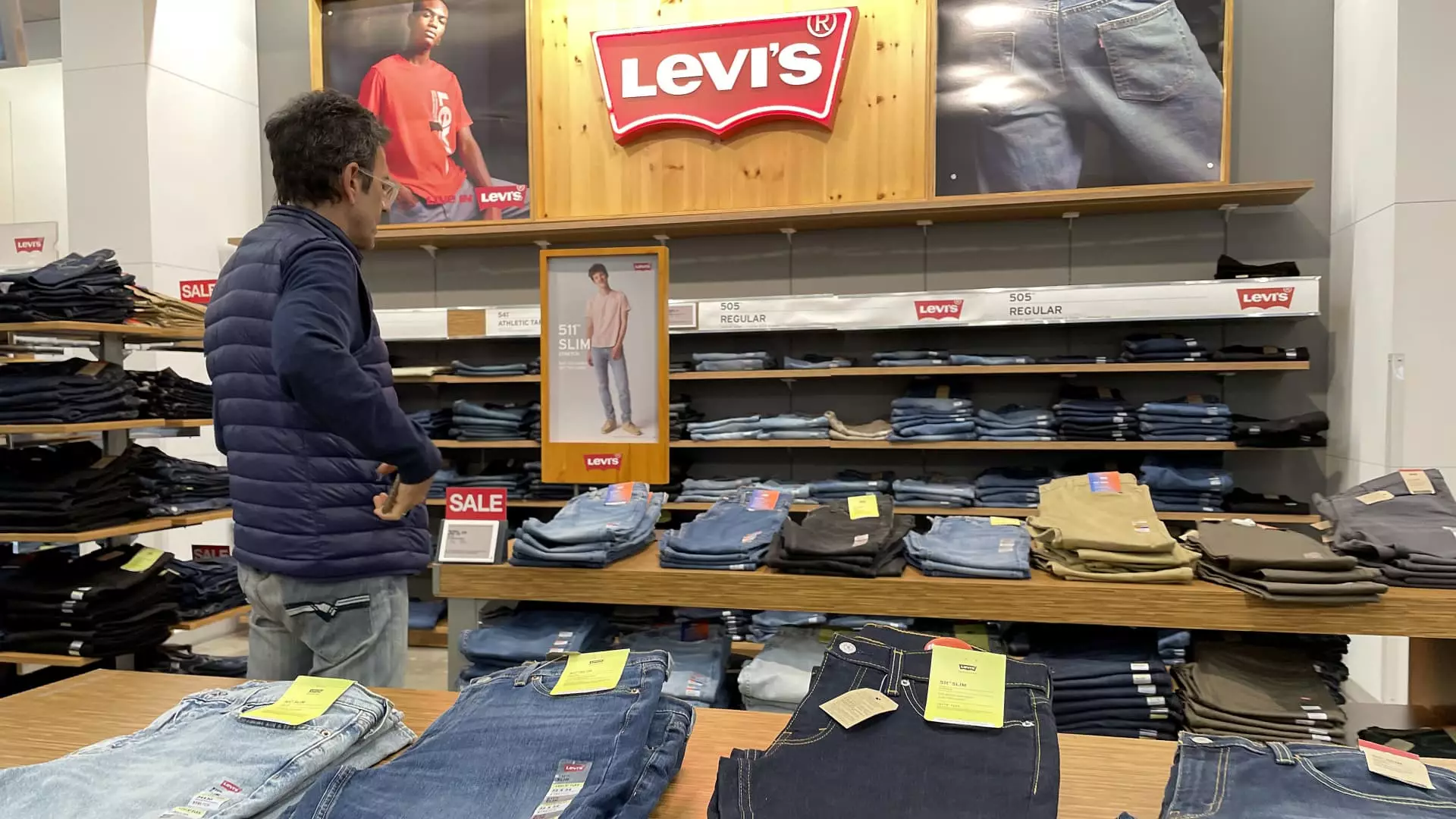Levi Strauss & Co, a name synonymous with denim, is facing a transformative moment in its storied history. Despite a recent uptick in demand for its flagship Levi’s jeans, the company’s overall performance reveals troubling signs, particularly concerning its Dockers brand, which has struggled to find its place in the current fashion landscape. This article delves into the perplexities facing Levi Strauss & Co as it navigates fluctuating sales, evolving consumer preferences, and potential strategic divestitures.
During its most recent fiscal quarter, Levi’s brand demonstrated a commendable 5% increase in sales, marking the most significant growth the company has witnessed in two years. This positive shift is encouraging; however, it stands in stark contrast to the company’s overall performance, which remained flat. The total revenue of $1.52 billion fell short of Wall Street expectations and prompted an 8% drop in share prices post-announcement. Although Levi’s managed to exceed per-share earnings estimates—33 cents adjusted against an anticipated 31 cents—this small victory is overshadowed by concerns regarding broader revenue trends and market fluctuations.
The company’s resilience comes at a time when many brands face headwinds stemming from changing consumer purchasing habits. Levi’s strategy of elevating its Levi’s brand as more than just a denim label is vital. It has expanded into various lifestyle offerings, establishing itself as a multifaceted brand that continues to resonate with diverse consumer needs. However, this transformation may also create challenges, as overlapping brand identities can confuse shoppers and complicate market positioning.
The larger issue troubling Levi Strauss is the underperformance of its Dockers brand, which recorded a staggering 15% decline in sales, contributing to broader revenue stagnation. Once, Dockers served as a go-to option for khakis in the 1990s and early 2000s; today, however, it finds itself irrelevant in a world where denim reigns supreme once again. Recognizing this misalignment, Levi’s management is considering a sale of the Dockers brand—a move that may allow Levi’s to focus resources and marketing efforts solely on its more profitable and culturally relevant line of products.
Harmit Singh, Levi’s CFO, articulated this sentiment during a recent interview, emphasizing the financial benefits of divesting Dockers. The potential sale aims to streamline operations and release each brand to pursue its unique value proposition independently. This acknowledgment of the brand’s diminished relevance exemplifies the company’s readiness to adapt to market demands.
Despite the challenges, Levi Strauss is making notable strides in direct-to-consumer (DTC) sales, which have become a strategic focal point amidst ongoing retail transformations. With DTC sales growing by 10%, and staggering e-commerce growth of 16%, the company is effectively harnessing digital platforms to reach its audience. During the quarter, DTC accounted for 44% of total revenue, with aspirations to elevate this figure closer to 55%. The margins associated with DTC sales are typically higher, thereby providing a crucial buffer against the dips in wholesale revenues.
As consumer preferences shift towards online shopping, Levi’s innovative marketing efforts—surrounding partnership campaigns, including the high-profile collaboration with pop icon Beyoncé—play a pivotal role in enhancing brand visibility and appeal. By leveraging celebrity influence and cultural relevance, Levi’s positions itself as a leader in integrating lifestyle with fashion, facilitating connections that are vital in today’s digital marketplace.
Regionally, Levi Strauss’s performance offers a mixed narrative. The company enjoyed unexpected success in Europe, where sales exceeded estimates, totaling approximately $406.6 million. However, the narratives from the Americas and Asia tell a more somber story, as sales in these regions fell short of projections. Specific challenges in the Americas stem from external factors such as a cyber breach impacting a primary wholesale partner in Mexico, which hampered shipping and sales. Meanwhile, marketplace dynamics in Asia, particularly in China, compound existing complications, leading the company to reevaluate their market strategy in this crucial territory.
As Levi Strauss & Co moves forward, it faces an intricate balancing act—while innovation and the revitalization of its primary brand fuel optimism, the specter of underperformance in ancillary brands necessitates diligent strategies. The company’s ability to adapt to market demands, embrace effective DTC operations, and explore strategic divestitures will be fundamental to its success in an increasingly competitive landscape. By reassessing its brand offerings and focusing on consumer desires, Levi’s aims to assert its pivotal place in both fashion and cultural spheres, ensuring its legacy endures for years to come.

